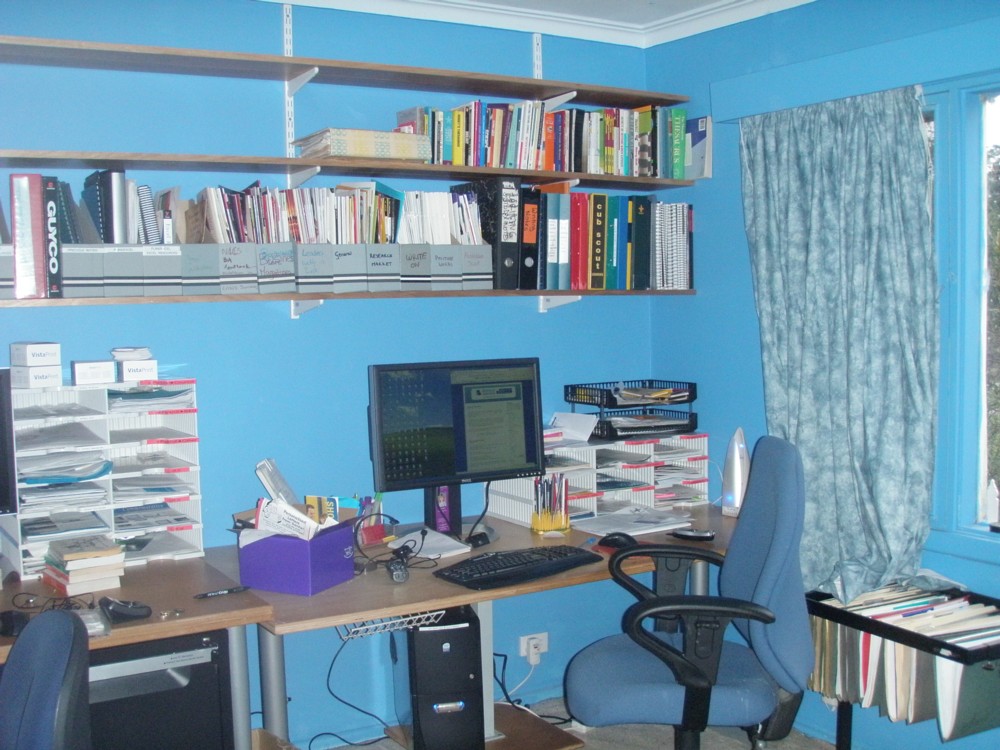I hope you find my writing and business tips and observations useful. My business and blog are dedicated to helping businesses communicate clearly and reach their potential.
Read, subscribe to my newsletter, enjoy!Tash
Making your business independant
Following on from my posts about identifying and protecting the essential elements of your business, another way to prepare for the unexpected is to reduce how much your business relies on you.
Here are some ways to reduce that reliance:
- train someone else to do some of the tasks, even if they don’t do it every time some knowledge will help if the key person can’t do it
- have some written procedures so someone else can ge the job done – it may be slower but it would be done. This also helps if you want to sell the business or hire a new person for the task.
- have critical knowledge stored somewhere other than in your head – have a document with passwords & contact details where it can be accessed by limited people. For some of my clients, I prepare a document register so they can track versions – I usually add comments about who designed thdocument so the client can quickly arrange a change if I wasn’t available. It also saves me remembering the information myself so it’s a good plan anyway
- identify back up people for critical tasks/roles
- ensure any staff understand the entire business and functions of other staff, and preferably be able to do a couple of other people’s tasks if necessary
- have a shared calendar for your team – if someone is then sick for example, any appointments and deadlines can be managed
- be flexible as much as possible – a team member who can’t come to the office for a few weeks may still be able to do some tasks at home or online, or work part time or unusual hours
- build relationships with professionals who can replace key skills – for example, I have relationships with other writters so in an emeregency my clients’ work could still be written even if I was unable to write myself
As part of your contingency preparations, there are a few related tings yo can do:
- test how reliant your business is on specific people – find out how long the businesscan manage without someone, how skilled others are at filling in for the key person, how many people can be missing from your team before it is critical, and so on
- plan some altered work practicesfor certain levels of staffing – for example, if a key person is sick for one or two days, everything continues but if they’re away for a week reduce client hours or produced items by 10% and if they’re away for a month, reduce by 50%. This would be particularly relevant during a prolonged event such as a pandemic or natural disaster if you have a team
- establish policies about how much leave staff are entitled to and how they are paid for such leave, including any leave without pay or make up hour arrangements
- have as much information and work available on a computer as possible so that remote access is an option and back ups are also easier
How reliant is your business?
As a sole trader, especially in the early part of a business and in a service based business, it is common for the owner to be critical to business operations. Without the owner, the business stagnates or slides backwards.
There are a number of consequences to this reliance, and all of them can impact on the long term success of the business.
1. the owner gets stressed and exhausted as they can’t afford to take a holiday or even a long weekend, and are likely to work when sick and/or recovering
2. something unexpected happens to the owner (e.g. a car accident, appendicitis, a premature birth, a critically ill loved one) and no one else is able to run the business so the business fails before the owner gets back
3. things are done by habit – there is no opportunity for new ideas or better methods, old errors get repeated, the owner can get bored and the business doesn’t grow as much as it could
In larger businesses, the same reliance can occur if people have very strictly defined roles. For instance, if only one person can access the bank account what happens to outstanding invoices while that person is seriously ill for two months? Or if that person was the only one who could update prices on your website, or operate the cash register, or prepare quotes
So how reliant is your business on one or two key people? What critical tasks need to carry on in the absence of that person(s)?
Protecting the essential
Last week I wrote about identifying the essential aspects of your business as one step in contingency planning. Obviously, the next thing is to protect those aspects as much as possible…
I see there are two distinct ways to protect essential details – find ways to prevent those details being hurt or destroyed and find ways to stop the business being so reliant on those details.
Each aspect of your business may require very different techniques for protection against damage, but the idea is to reduce the risk of a problem and then reduce the length of time before it is operational again.
Here are some examples of how to protect some aspects of your business – and you can use these even if they don’t count as essential aspects of your business:
- provide a safe working environment for yourself and staff – it may sound simple, but imagine a masseur or carpenter falling over a loose cord and breaking their arm …
- isolate people during health issues – for instance, swine flu can’t spread if those with the disease are not near everyone else. This can mean sick people don’t come to work or you arrange for remote access for sick people and/or essential staff
- have computer back up systems in place – and store the data off site. We use carbonite as it regualrly backs up for us and we can reclaim work easily at any time, even after human errors rather than major problems
- make sure your equipment is serviced and cleaned frequently
- instal security alarms, locks and so on to protect against theft
- ensure smoke and fire alarms are working and placed appropriately – smoke alarms above a stove going off all the time tend to be ignored so move them
- purchase a fire proof safe to store precious documents, data and equipment
- establish rules to minimise damage of fragile and essential items – for instance, only fully licensed drivers do deliveries, store fragile items out of walkways and on stable surfaces
- research details for a back up web host in case you need to swap in a hurry (for example their servers were damaged in a natural disaster and your site would be down for weeks)
- have a spare computer and monitor available to use if necessary – it doesn’t have to be as good as your usual computer as long as it can cope with the basic and essential requirements
- know where you can hire replacement equipment if need be, and keep those details somewhere accessible
What other ways have you protected your essential business assets?
Making changes…
 Last week, I found out that cuboree (a big camping event for cubs in Victoria that I went on last year) has been moved. Instead of being in April 2011, it will be in September 2010 is the latest news in scouting. The previous five cuborees have been three years apart and in the March/April school holidays, so the date has surprised many people.
Last week, I found out that cuboree (a big camping event for cubs in Victoria that I went on last year) has been moved. Instead of being in April 2011, it will be in September 2010 is the latest news in scouting. The previous five cuborees have been three years apart and in the March/April school holidays, so the date has surprised many people.
Not only has the change surprised people, but it has also annoyed and angered many leaders as well. The change from March to September was made for logistical reasons – it is easier to prepare such a large event later in the year for a voluntary group that effectively shuts down over summer.
However, the event could have been moved forwards to September 2011 or backwards to September 2010.
Moving forwards had the disadvantage of meaning some children would miss a cuboree on age rules – easily fixed by adding 6 months to the maximum age for that one cuboree.
Moving backwards has a number of disadvantages – it is sooner and in the same year as jamboree so leaders will potentially have trouble getting time off work and away from families, not to mention risking being exhausted and reluctant to help at future events, being the same year as jamboree makes it difficult for leaders and cubs to afford cuboree, being the same year as jamboree is a strain on groups preparing and possibly funding children going on these camps.
Many leaders are unhappy with the new date and are following this up so the dates may yet change.
Making changes in business
Aside from my personal interest in the timing of cuboree, there is a business perspective to this story!
Sometimes, it is necessary to make a change in business, even to long established practices. And those changes may just have to be implemented without much notice or consultation. However, the change is likely to be much smoother if you notify people as soon as possible and explain the reasons for the change if they are likely to be inconvenienced or annoyed by it.
So tell leaders that cuboree is moving to September because time is needed to organise it in the lead up. Simple.
If a change affects many people, especially if you have staff or key stakeholders, the ideal is to involve them in the change process. Ask their opinions, get their suggestions and listen to their objections. You may still do what you had planned but
- they will feel better and more in control if they were involved, which means they are more likely to support the change
- you will know what objections and challenges may arise and therefore prepare for them in advance
- you may be able to adjust the plan a little to reduce concerns and problems
- you will have more confidence that your business will survive and thrive with the change
Humans generally struggle with change, but a consultative process is easier to deal with.
How have you managed any major changes in your business? Or have you been an employee in a business undergoing big changes – what worked or didn’t work?
Small business tax break
The 50% tax deduction for small businesses (turnover under $2 million) announced in the Federal Budget has now been given royal assent so it is law. That means, eligible purchases over $1,000 can be added to your tax return as a 50% deduction.
Note that this is a bonus as you can still claim any depreciation and deductions you would otherwise be entitled to.
So if a purchase was already something you had planned this year (the deadline is 31 December 2009) it’s great news; if a purchase was a possibility or planned for early next year, considering buying it now is now more affordable. However, if cashflow is a problem and/or you don’t really need any $1,000 purchases, forget the tax break and spend your money elsewhere!
Is this tax deduction affecting your spending?
I am about ready to upgrade my computer so this tax break could be well timed for me – yes I could buy a computer for under $1,000 anyway but I want reliability, a large screen and various features (such as mobility, i.e. a laptop) that will make life easier for me.
What’s essential?
With the bushfires and floods, the global financial crisis and swine flu, every business should be thinking about having contingency plans in place. I gave some tips on preparing for a distruption to your business and being prepared, but real contingency planning requires even more effort.
A key step in ensuring your business can survive a major issue is understanding what is essential. Protecting and replacing the essential is what helps you survive – other things may be important but are of little use if the essential factors are missing.
For example, it is important to have the Word Constructions website online but it is essential that I have a computer and software for preparing documents (yes, I can write with pen and paper but it isn’t very professional to hand that to a client!)
So what is essential in your business? Think about the essential equipment, skills, people, services and resources you rely on.
Imagine a dentist’s surgery without a dentist, an engineering firm with no engineers, a dressmaker business with no sewing machine, a hairdresser with no scissors and a referral agency missing its directories.
Make a list of what is essential for your business, and perhaps a second list of what is very important but non-essential.
Our new office
Over the weekend, we moved into our new office. It has been a long time coming, but it is wonderful to be here.
We’re still in the same building but the office itself has moved so we’re now on the north side of the house which means lots of natural light and winter sunshine. It is about double the size of our old office so we won’t be cramped any more, can fit in a third desk and even have floor space for the baby to play and crawl.
I am also looking forward to the luxury of adding a futon shortly so that I have somewhere to sit for proof reading and reading rather than staying at my desk (changing location does help when proof reading!)
 You can see from the photo that we have a blue office (of course – it is the Word Constructions colour as well as being a peaceful colour to look at all day) and that not everything is unpacked yet. And look at all that spare shelving, too!
You can see from the photo that we have a blue office (of course – it is the Word Constructions colour as well as being a peaceful colour to look at all day) and that not everything is unpacked yet. And look at all that spare shelving, too!
It was an interesting exercise preparing for this move. When planning rooms in our home, we take time to choose colours and surfaces, adding furniture and decorations to make it a nice environment. Yet so many home offices are based on putting a desk into any spare space.
Planning our new office gave me the chance to really think about what I wanted – I realised that I spend more waking time in the office than any other room so surely it should be the room I put the most thought and effort into setting up. So we modelled different layouts, spent time agonising over paint colours, contemplated various floor coverings and I am getting new desk organisers.
Now we’re here, I will also choose some nice art to go on the wall instead of just business registrations and useful information – of course we don’t have a lot of wall with so much shelving and window, but there’s enough to add touches that make it a nice place to be.
As a writer, I am excited about a large window and nice art to stare at when thinking or looking for inspiration!
I’m also going to get myself a white board so I can write reminders and ideas on it. I prefer that to bits of paper because it is environmentally friendlier, will be highly visible and can’t get lost under other papers/books/baby toys/etc.
If you have a home office, when is the last time you put effort into how it looks and functions? Have you considered the importance of making your work area pleasant and welcoming for you? You’ll probably find that many expenses associated with improving your work area are tax deductible, too – I know my new desk area will improve my productivity (in fact it already has!)
Value of education
Perhaps the most valuable result of all education is the ability to make yourself do the thing you have to do, when it ought to be done, whether you like it or not.
Thomas Huxley
An interesting quote… Thinking of education in a broader sense (that is, not just going to school for a formal education) I tend to agree with Huxley. By learning more through seminars, books, articles, conferences, discussions, professionals and so on, we often have a better idea of what we could do to achieve an aim.
So what will you learn this month? How will you further your knowledge and give yourself more power?


Recent Comments